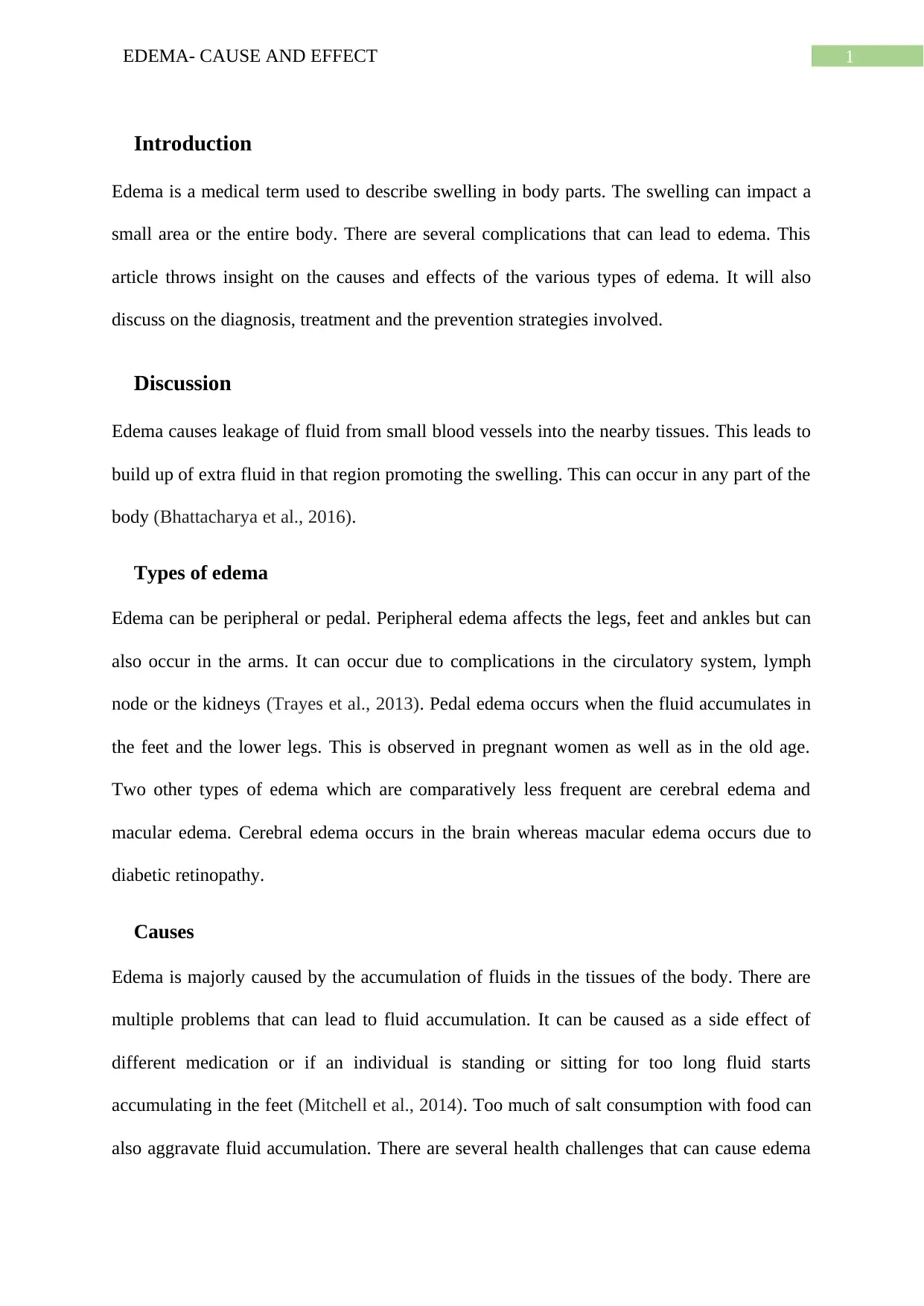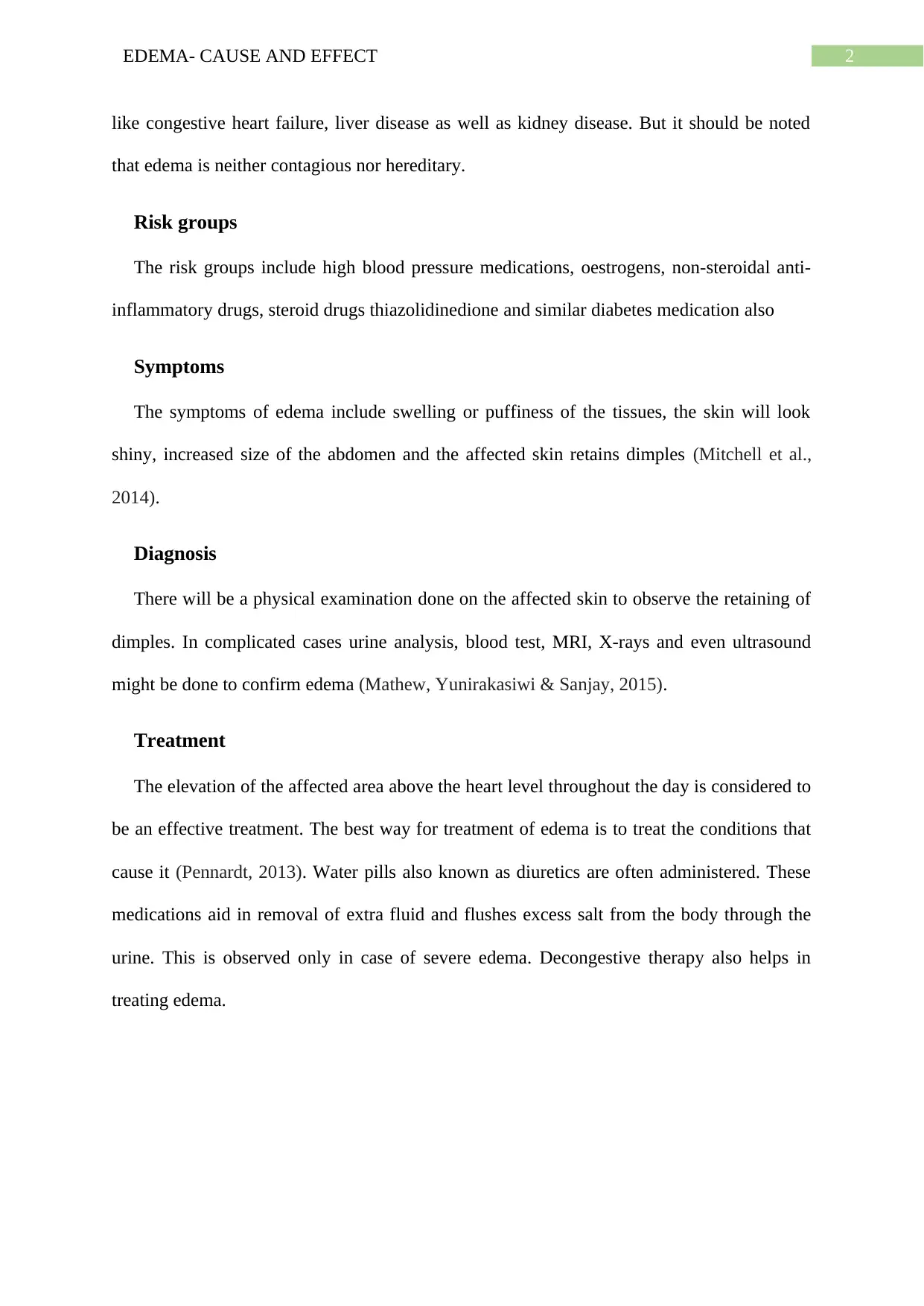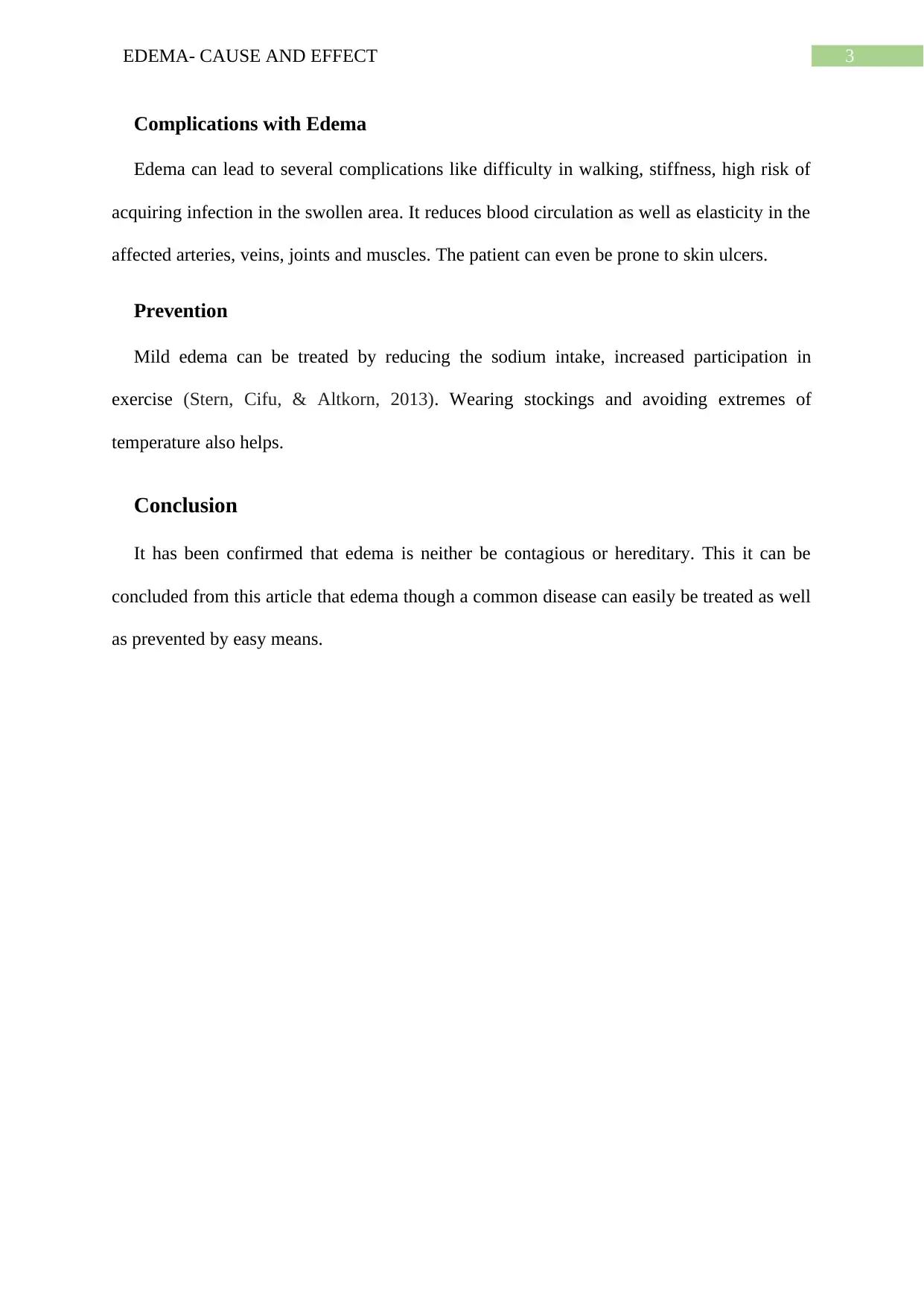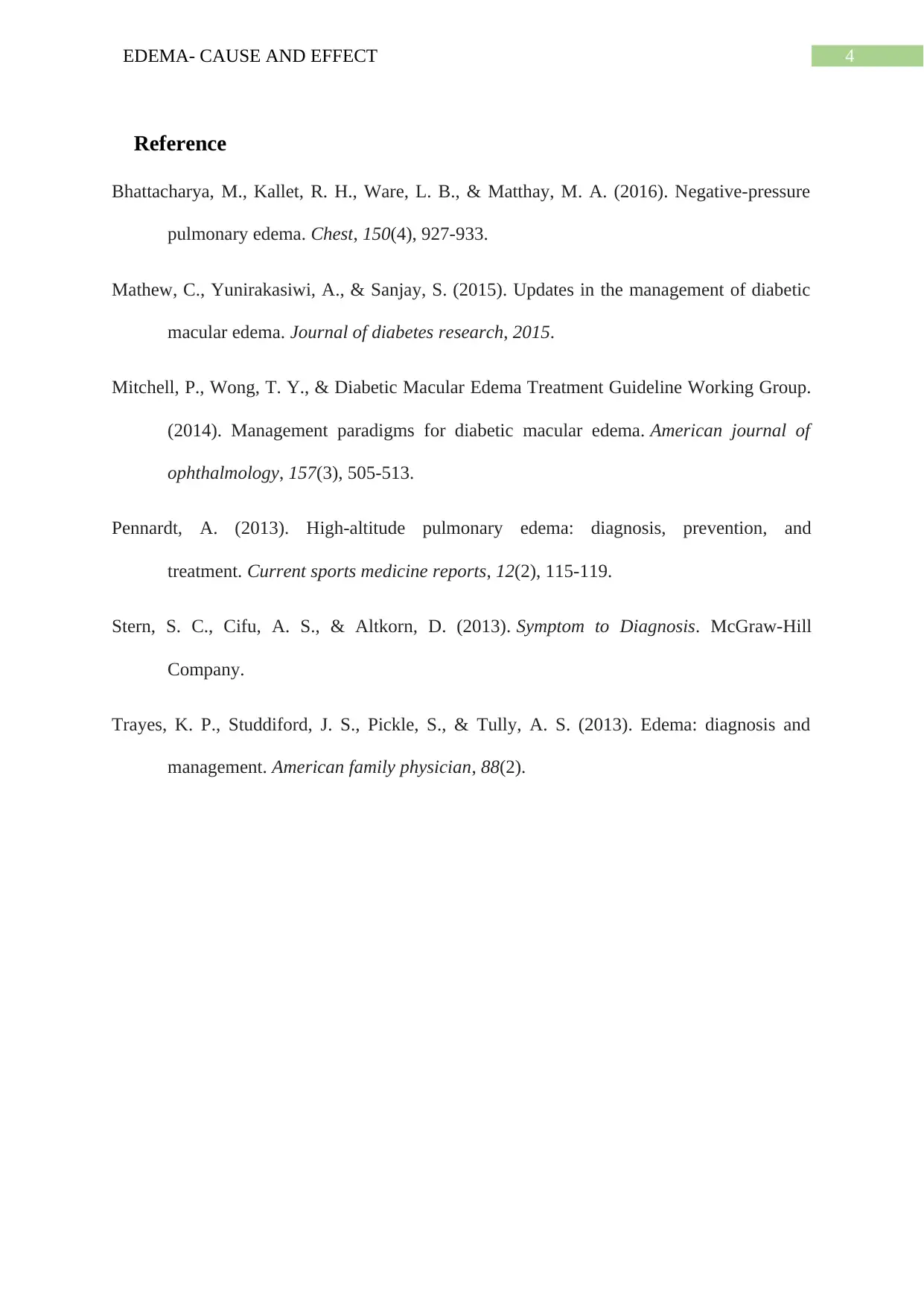Edema: Exploring Causes, Effects, and Management Strategies
VerifiedAdded on 2022/09/09
|6
|914
|20
Report
AI Summary
This report provides a detailed overview of edema, a medical condition characterized by swelling in body parts. It explores the various causes of edema, including fluid leakage from blood vessels and accumulation in tissues, which can be triggered by medications, excessive salt intake, and underlying health issues like heart, liver, and kidney diseases. The report differentiates between types of edema, such as peripheral, pedal, cerebral, and macular edema, and outlines the symptoms, risk groups, and diagnostic methods, including physical examinations, blood tests, and imaging. Treatment strategies discussed include elevating affected areas, using diuretics, and decongestive therapy. The report also addresses potential complications like difficulty walking, reduced blood circulation, and skin ulcers, along with preventative measures such as reducing sodium intake and exercise. It concludes by emphasizing that edema is neither contagious nor hereditary and can be effectively managed through various treatments and preventive actions.
1 out of 6












![[object Object]](/_next/static/media/star-bottom.7253800d.svg)